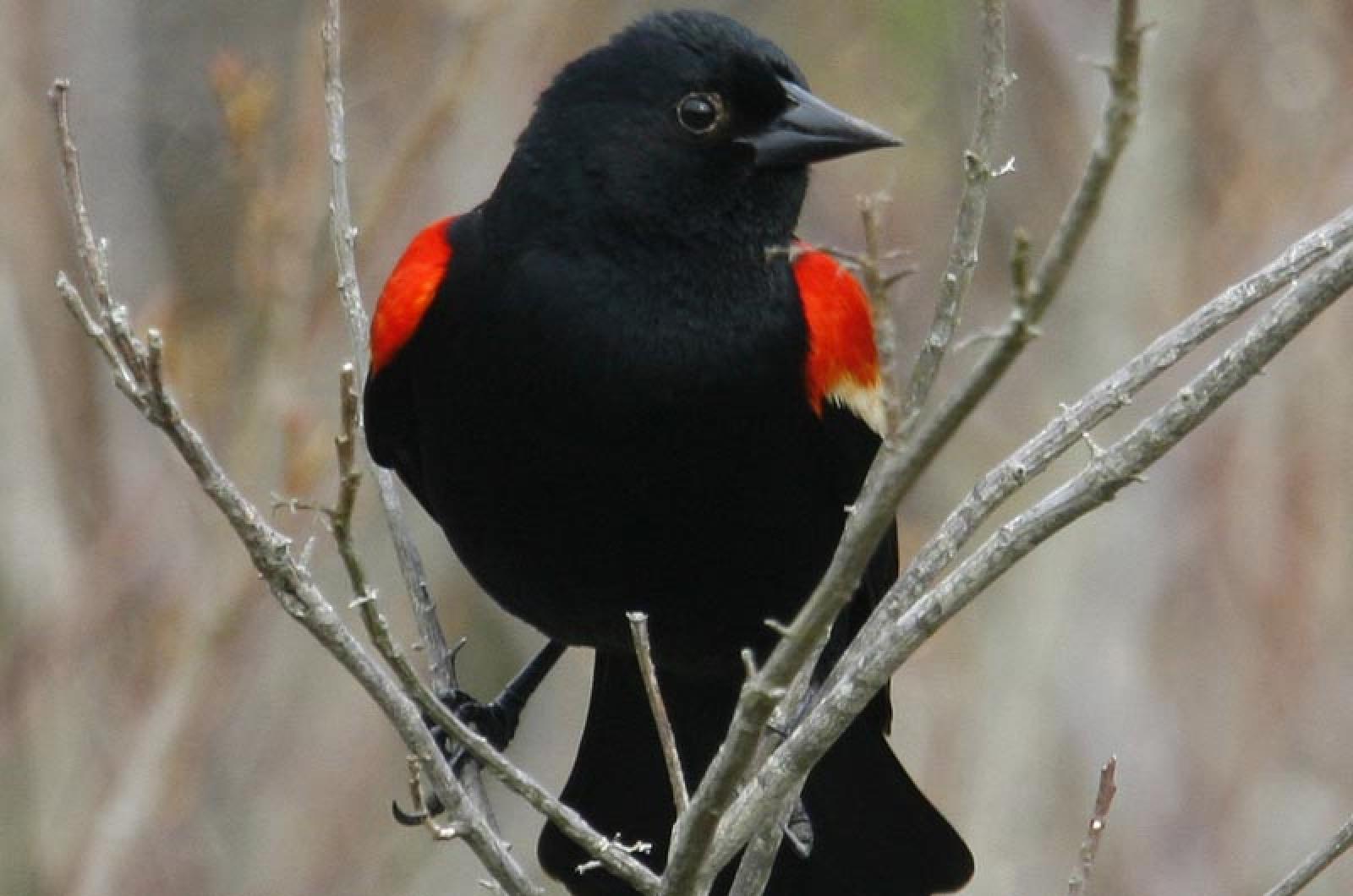Raptors are another name for eagles, hawks, falcons and owls. These generally larger animals are always fun to see.
We have had an immature bald eagle around since early January. Most likely the multiple sightings from around the Island are of the same bird, although it could easily be multiple birds making brief visits from other parts of New England. The most recent sighting came from Doug Reece and his daughter Lily Lubin. They spotted the eagle at the head of the Lagoon as it was eating a bird that was frozen into the ice. It is not unusual for eagles to scavenge such unlucky animals.
A second unusual raptor that has been around since early January is a short-eared owl. Wendy Culbert and I spotted this diurnal owl on Feb. 10 at Quansoo Farm. It put on quite the show, wheeling around and back as it hunted the fields around Black Point Pond. Many of us remember how common this species was as a year-round resident of grasslands on the Island in the 1970s.
There are still a lot of snowy owls around and many people continue to report them. Katama and Lobsterville seem to be the easiest places to find this remarkable, usually arctic owl. It is worth your effort to find one of them.
One species of raptor that is absent from our arctic-like winter is the rough-legged hawk. They used to be seen regularly in the winter, but I have not heard of any reports from the Island this winter. The ebird website shows a few of these large buteos in southeastern Massachusetts, from Provincetown and Plymouth. Keep an eye out for them; they prefer grassland and shrubland habitats like the snowy and short-eared owls.
Bird Sightings
Red-winged blackbirds are in the news this week. Susan Straight reports six red-wings frequenting her feeder near Quitsa Pond since Feb. 2, and Dick Jennings had two red-wings at his feeder on Feb. 5, including one female. We have had flocks of red-wings through the winter, but I do not recall anyone reporting a female. So are they early migrants? If they are, maybe they are headed further north. When our breeding red-wings return, they usually set up territories in or near marshes, and they will be singing.
Susan Straight also reports that a flock of hooded mergansers have been in the cove at the western end of Quitsa Pond since late fall. They were joined by a pair of mute swans on Feb. 3. The barn owl she has been seeing looks well nourished, an examination of the pellets shows a diet of white-footed mice, meadow voles and a Norway rat.
With our extended snow cover, robins are now consuming some long-ignored berries. Rick Karney observed a flock of eight to 10 robins devouring berries in a big holly tree on Feb. 5, as did Ned Casey, Penny Uhlendorf and Susan Shea. That day I observed a flock of robins eating the shriveled crab apples from a tree in my yard. That same day I observed white-throated sparrows at my feeder.
Jeff Bernier had a hermit thrush eating berries in his yard on Feb. 6.
On Feb. 7, Sharon Pearson observed eastern bluebirds at her feeder.
Menemsha harbor was totally loony on Feb. 8. Jeff Bernier found 11 of them in the harbor and another seven in Menemsha channel. There must have been a lot of fish around to have that many loons in one place.
That same day, Danguole Budris found a flock of common eiders in Menemsha Pond.
Fish crows are still in the news. David Stanwood reports another big commuter crow fly-by over the ridge north of the Hoft Farm/Nature Conservancy field on Feb. 10. Sharon Gamsby and Harriet Bernstein have seen these large flocks of crows as well. There are both American crows and the smaller fish crows in these flocks; the latter are best identified by their nasal cah-cah call. Matt Pelikan has seen the big flocks crossing Vineyard Sound when he is on the 3:45 boat, but reports that the Oak Bluffs winter roost is smaller than it has been in past years.
Allan Keith reports seeing fish crows in the middle of the day in Vineyard Haven, both at Five Corners and Cronig’s Market. So it seems that some fish crows are now spending all day on the Vineyard rather than only commuting to a nocturnal roost. Allan Keith also reports that he now has two clay-colored sparrows at his Chilmark feeder.
Finally, congratulations are due to Allan Keith. He is the 2014 winner of the Claudia Wilds Award, presented by the American Birding Association. Quoting from that association, the preeminent organization for birds and birders, Mr. Keith “was twice president of the ABA — from 1989-93 and from 1997-99 — and served earlier as a board member and ABA treasurer. In all these capacities, his investment and business savvy was of immense benefit to ABA at a difficult time in the association’s history.”
The annual Great Backyard Bird Count is this weekend, from Feb. 14 to 17. All you need to do is count birds anywhere for at least 15 minutes and report your results. Make multiple counts from a variety of places and report all of them. Have fun and contribute to our knowledge of birds.
Robert Culbert leads guided birding tours and is an ecological consultant living in Vineyard Haven.







Comments
Comment policy »